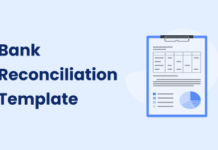Business travel expenditures can quickly get out of hand if not tracked properly. Many companies struggle with setting a clear budget for travel or ensuring that employees stick to the travel policies. These small missteps can quickly add up, causing unnecessary financial strain.
By calculating average travel expenditure, you gain control over your expenses. It helps you create better budgets, stay within policy limits, and avoid unexpected hits to your cash flow. Plus, it gives your finance team a clearer view of where the money is going so you can manage payments more smoothly.
This guide will show you how to calculate business travel expenses effectively, helping your company stay on budget and in control.
Let us begin with the basics – “What is travel expense?”
What Is a Business Travel Expense?
Business travel expenditures are costs that employees incur when traveling for work. These costs can vary based on how they travel, such as by airplane, train, or bus. They may also be determined by the employee’s position, such as senior executive or junior team member.
Employees might need to travel within their city, across the country, or even to other countries for business. The amount they spend often depends on how far they travel and how long they stay. Typical deductible travel expenses include meals, hotels, and other necessities needed to get their work done during the trip.
What Does Not Count as a Business Travel Expense?
It is important to know what qualifies as a business travel expense. This helps employees focus on the right costs. It also keeps the company from overspending. Below are some examples of expenses that usually do not qualify:
- Personal trips: Taking a side trip for sightseeing or leisure is not deductible.
- Upgraded flights: Flying first class without a business reason does not count.
- Personal meals: Luxury dining without any work-related reason.
- Entertainment: Attending shows or events that have no business purpose.
- Gifts for family: Spending on family members while on a business trip does not qualify.
Managing travel expenditure well is important for the business. If not managed, travel costs can get out of control, hurting a company’s budget and causing cash flow problems. That is why having clear expense reimbursement policies and good tools to track expenses is smart.
By monitoring travel costs closely, businesses avoid overspending. Employees also know what they can and cannot claim, which prevents unnecessary spending. In the long run, controlling these costs helps companies keep their finances in order.
Components of Business Travel Costs
Business travel costs come from different areas. Each part plays a role in the total expense. Understanding these components helps businesses track and manage their spending better. Let us break down each key element in detail:
1. Transportation Costs
Transportation is often the largest part of business travel costs. This includes flights, trains, buses, or car rentals. For international travel, flights are usually the biggest expense. Domestic travel can involve plane tickets or long-distance train rides.
For example, a company may send an employee on a 3-day business trip. The flight costs $600, and the rental car is $150 for the entire trip. These are direct transportation costs.
To control these costs, companies often book tickets in advance. They might also have partnerships with airlines or rental car services, which helps them save on regular travel expenses.
2. Accommodation
Accommodation covers where employees stay during the trip. Hotels are the most common choice. Prices can vary depending on the city, time of year, and length of stay.
For example, an employee attending a week-long conference might need a hotel room that costs $150 per night. If they stay for five nights, the total accommodation cost is $750.
Some businesses limit the type of hotels employees can book. To keep costs low, they might allow only mid-range hotels instead of luxury ones.
3. Meals and Incidental Expenses
Meals are another major part of business travel. Employees often eat out when traveling. Companies usually cover these meal costs but may set a daily limit called a per diem.
For example, an employee traveling for two days may have a meal allowance of $50 per day. They can spend up to $100 on food for the entire trip.
Incidental expenses include smaller, often overlooked costs. This can be tips, laundry services, or room service. While these costs seem small, they add up quickly. Companies often include a set amount per diem or handle these expenses separately.
4. Local Travel and Car Expenses
Once employees arrive at their destination, they often need to move around locally. This might involve using taxis, public transport, or rideshare services such as Uber.
For example, an employee might need to attend multiple meetings in different parts of the city. During their stay, they could spend $40 on local taxi rides. The company might reimburse employees based on mileage if employees use their cars.
Car rental services are another option for local travel. Businesses may rent cars for longer stays, which adds to the total travel cost. Setting guidelines for car rentals helps control these costs.
5. Communication Costs
Communication costs include things such as international phone calls or mobile data charges. When traveling abroad, employees often need access to Wi-Fi or may use international calling plans.
For example, an employee on a work trip to another country may need to call the office regularly. These calls might cost $1 per minute, leading to a significant bill if not managed properly.
Some companies provide employees with international data plans or set up temporary SIM cards, which helps them manage communication costs more effectively.
Understanding the components of travel costs is just the start. To fully manage these expenses, businesses must also comply with tax regulations to avoid potential penalties.
Compliance with Tax Regulations
Understanding and complying with tax regulations is crucial for businesses managing travel expenses. Missteps in this area can lead to fines or penalties, severely impacting a company’s finances. To stay compliant, companies need to understand the rules set by tax authorities, such as the IRS. Let us explore how businesses can manage travel expenses while adhering to tax regulations.
1. IRS Rules for Travel Expense Deductions
In the U.S., the Internal Revenue Service (IRS) sets clear rules for travel expense deductions. These deductions allow businesses to reduce their taxable income by claiming legitimate expenses incurred during work-related travel. However, not all expenses qualify for deductions, and it is important to understand what is allowed.
As mentioned above, the eligible expenses include:
- Transportation costs: Airfare, train tickets, or mileage if using a personal vehicle.
- Lodging: Hotel stays or temporary accommodation during the trip.
- Meals: Meals while traveling, subject to the 50% limit imposed by the IRS.
- Incidental costs: Tolls, parking fees, or baggage fees.
For example, if an employee spends $1,000 on transportation, $500 on lodging, and $200 on meals for a business trip, the company may deduct the full transportation and lodging costs. However, only 50% of the meal expense ($100) would be deductible.
Deducting personal expenses by mistake can cause financial problems. It can also lead to issues with compliance.
For example, if a company tries to deduct the entire cost of a trip, including personal activities such as sightseeing or spa visits, they would be breaking IRS rules. Only business-related costs are allowed for deductions. Personal expenses must be left out to follow the rules correctly.
2. Travel Deduction Errors Leading to Penalties and Audits
Failing to follow tax rules can cause serious problems. If the IRS finds that a company claimed expenses it should not have, there could be fines or penalties. The IRS may also disallow certain deductions. The company’s taxable income would increase, leading to a bigger tax bill.
Not following the rules can also lead to an audit. In an audit, the company must show records for all travel expenses, including receipts and explanations for each cost. Without proper records, the company could lose some deductions and face more penalties.
For example, if a company claims $10,000 in travel expenses but can not provide receipts for $3,000, the IRS may disallow that $3,000. This would raise the company’s taxable income and increase the taxes it needs to pay.
3. Strategies for Avoiding Penalties
To avoid penalties, companies should follow these key strategies:
- Keep Accurate Records: Ensure that all travel expenses are well-documented. Keep receipts, invoices, and records of payments for each trip. Many businesses use expense management software to store and organize receipts digitally. This makes it easier to access records during tax time or in the event of an audit.
- Adhere to IRS Rules: Familiarize yourself with the IRS guidelines on what qualifies as a deductible travel expense. Ensure that all travel costs submitted for deductions are legitimate and business-related. Exclude personal expenses from the deduction claims.
- Track Mileage: Keep detailed mileage records if employees use personal vehicles for business travel. The IRS allows deductions based on a standard mileage rate, which is updated annually. In 2024, the standard rate is 67 cents per mile. Failing to track mileage correctly can lead to missed deductions or compliance issues.
- Use Per Diems: The IRS allows businesses to use per diem rates for meals and lodging instead of claiming actual expenses. This simplifies record-keeping and ensures compliance. Per diem rates vary based on location, so it is important to use the correct rates for each destination.
Using Per Diem Rates to Simplify Reporting: A company sends an employee to a conference for four days. Instead of collecting receipts for each meal and hotel stay, the company uses the IRS per diem rates. For a city with a $200 daily lodging per diem and $55 daily meal per diem, the company claims $820 (4 days x $200 for lodging + 4 days x $55 for meals) as the deductible amount. This simplifies reporting and ensures compliance with IRS rules.
Methods of Calculating Travel Expenses
Accurately calculating travel expenses is key to staying on budget. It helps businesses plan, track, and control their spending. Without proper methods, travel costs can spiral out of control. This section will explore different ways to calculate travel expenses effectively.
1. Pre-Trip Planning and Budgeting
The first step is planning. Businesses need to estimate costs before the trip. This includes budgeting transportation, accommodation, meals, and other expenses.
For example, a company might plan a 3-day trip for an employee. They estimate:
- Flight cost: $500
- Hotel: $150 per night (3 nights = $450)
- Meals: $50 per day (3 days = $150)
- Local Travel: $40 total
In total, the estimated cost for this trip would be:
| Total Estimated Cost = Flight + Hotel + Meals + Local TravelTotal Estimated Cost = $500 + $450 + $150 + $40 = $1,140 |
Creating this budget allows companies to set spending limits. It also provides a reference for tracking actual expenses later.
2. Record Keeping and Receipt Collection
Once the trip starts, accurate records are essential. Employees should collect receipts for all expenses, including flights, hotel stays, meals, and other costs.
For example, if an employee spends $30 on a meal, they should keep the receipt. This serves as proof of the expense and helps with reimbursement later.
Companies may use digital tools or apps to help employees scan and store receipts. This makes it easier to track expenses in real-time. Without proper records, businesses can not verify if the expenses are legitimate.
3. Post-Trip Reconciliation and Expense Categorization
After the trip, it is time to reconcile the expenses. This means comparing the budget with actual costs. It helps to identify any overspending or areas where savings were made.
For example, if the employee’s meal budget was $150 but only spent $120, that is a $30 saving. On the other hand, if they spent $160, it shows an average of $10.
Companies also categorize expenses into transportation, meals, or lodging. This helps businesses track where most of their money goes, and accurate categorization ensures better financial control.
Example Case 1: Budget vs Actual Cost
Suppose a company sends an employee on a trip, and they budget $1,000 for the trip.
The actual costs are:
- Flight: $500
- Hotel: $400
- Meals: $120
- Local Travel: $30
The total actual cost is:
| Total Actual Cost = Flight + Hotel + Meals + Local TravelTotal Actual Cost = $500 + $400 + $120 + $30 = $1,050 |
In this case, the company overspent by $50. They can use this data to adjust future budgets and improve spending control.
Example Case 2: Reimbursement Calculation
Suppose an employee is reimbursed for mileage when using their car. The company reimburses $0.58 per mile.
If the employee drove 100 miles during the trip, the reimbursement calculation is:
| Reimbursement = Mileage Driven × Reimbursement RateReimbursement = 100 miles × $0.58 = $58 |
This method ensures employees are properly reimbursed for their travel-related driving and keeps the company’s records accurate.
Here are some tips for accurate expense calculation:
- Set Clear Policies: Employees should know what qualifies as a reimbursable expense. This prevents confusion and ensures they only claim legitimate costs.
- Use Travel Management Software: Digital tools make tracking expenses easier. They automate the process, making collecting receipts and categorizing expenses simple.
- Review Budgets Regularly: Compare the estimated and actual expenses after each trip. Look for areas where spending can be reduced in the future.
Tools for Tracking and Managing Travel Expenses
Managing business travel expenses can be overwhelming without the right tools. The key to controlling these costs is using effective expense management software. It helps businesses streamline travel requests, expense reports, and reimbursements. Here is how it works and why it matters.
1. Use of Travel Expense Management Software
Managing travel expenses manually can lead to errors and missed receipts. Peakflo allows companies to automate corporate travel management. Employees can easily log their expenses, upload receipts, and submit them for approval.
For example, an employee might travel for a week-long business trip. Instead of keeping a pile of receipts, they can upload them directly into the system. The software automatically stores and organizes each expense, ensuring nothing gets lost or forgotten. The finance team can review and approve the expenses with just a few clicks.
2. Importance of Tagging Expenses for Record-Keeping
Tagging expenses is essential for accurate record-keeping. Companies can track where money goes by categorizing expenses, such as transportation, lodging, or meals.
For example, employees who spend $500 on airfare and $300 on hotels can tag these costs in their respective categories. This lets the finance team see how much is spent in each area. By tagging expenses, businesses can review spending patterns and make data-driven decisions.
This process also helps during audits. If a company is audited, having tagged expenses makes it easy to pull up records and avoid compliance issues.
3. Software Solutions for Streamlined Tracking and Reporting
Expense management software tracks expenses and provides detailed reports. This gives businesses a clear view of their spending habits. Companies can analyze where they are spending the most and identify areas for improvement.
For example, a monthly report might show that a company spends heavily on last-minute travel bookings. With this information, they can create policies to encourage early booking and save on travel costs.
Peakflo’s software goes a step further by automating expense approvals. Employees can submit their expenses, and managers can approve or reject them instantly. This speeds up the reimbursement process and reduces manual work.
Now, let us explore some smart strategies to save on travel expenses.
How to Reduce Travel Expenditure?
Reducing travel expenses is crucial for maintaining your company’s budget. Small savings on every trip can add up to a significant amount over time. With the right strategies, businesses can cut unnecessary costs while still allowing employees to travel efficiently. Let us explore some key methods for reducing travel expenses.
1. Slash Travel Expenses with Virtual Meetings
One of the simplest ways to reduce travel expenditure is video conferencing. Not all meetings require face-to-face interaction, and companies can save on transportation, accommodation, and meal expenses by holding virtual meetings.
For example, instead of flying employees to a different city for a two-hour meeting, you can use video conferencing tools to achieve the same result. This not only saves money but also reduces the time employees spend traveling.
2. Loyalty Programs and Corporate Negotiations
Another way to reduce travel expenditure is by taking advantage of loyalty programs. Many airlines, hotels, and rental car companies offer these programs. Employees earn points for their travel, which can be redeemed for discounts or free services later.
For instance, if an employee travels with the same airline frequently, the company can benefit from free upgrades or discounted tickets. Additionally, businesses can negotiate corporate rates with hotels and airlines. These rates often come with bulk discounts or special deals for long-term stays.
3. Analyzing and Reviewing Travel Data
Reviewing travel data is a powerful way to identify savings opportunities. By analyzing travel trends, businesses can find patterns in spending. For example, data might show that last-minute bookings cost significantly more. With this knowledge, companies can encourage employees to book in advance, saving money on flights and accommodation.
Regular reviews of travel policies also help businesses identify areas for improvement. For example, if data shows that employees consistently spend more than their travel allowance, the company might consider adjusting per diem rates or encouraging more cost-effective dining options.
4. Encouraging Early Bookings
Booking flights and hotels early is one of the easiest ways to save money. Last-minute bookings often come with high price tags. Companies can avoid inflated costs by encouraging employees to book trips in advance.
For instance, booking a flight two weeks in advance might cost $300. However, waiting until a few days before the trip could increase the price to $500. Setting clear guidelines for early bookings helps reduce these unnecessary expenses.
5. Setting Clear Travel Policies
Clear travel policies help prevent overspending. Businesses can avoid out-of-control costs by limiting employees’ spending on flights, hotels, and meals.
For example, a company might rule that employees can only book economy-class flights for domestic trips or limit hotel stays to mid-range accommodations. These policies allow employees to travel while ensuring costs stay within budget.
Streamline Travel Expense Management with Peakflo
Managing business travel and expenses can be difficult. Companies often face challenges such as ensuring everyone follows policies, handling manual paperwork, and tracking expenses in real-time. These issues slow down the process and create delays.
Peakflo’s travel and expense management platform solves these problems. It automates tasks, from approving travel requests to managing reimbursements. This makes each step simpler and faster, reducing errors and saving time.
Here’s how Peakflo can help businesses manage travel expenses:
- Configurable Policies: Set clear expense rules that fit your company’s spending guidelines.
- Dynamic Expense Category: Sort expenses into flexible categories based on business needs.
- Per Diem Rules: Limit daily spending with location-based per-day allowances.
- Manage Travel Requests: Streamline travel request creation and submission to match company guidelines.
- Expense Automation: Peakflo automates travel expense submissions and reimbursements, reducing manual tasks.
- Integrations with ERPs: It integrates with popular ERP/accounting software, ensuring smooth financial workflows.
- Real-Time Expense Monitoring: Offers real-time visibility into travel costs, improving accuracy and compliance.
- Customizable Approval Flows: Allows businesses to set up tailored approval workflows for faster reimbursements.
- Policy Adherence: Flags non-compliant expenses, enforcing company policies automatically.
- Anomaly Detection: Quickly identify unusual expenses with alerts for out-of-policy expenses or duplicates.
Conclusion
Accurate travel expenditure tracking is crucial for keeping business costs in check. But, managing those expenses does not have to be a hassle. With the right tools and clear strategies, businesses can simplify the process and avoid costly mistakes. Sticking to best practices prevents overspending and ensures compliance with tax rules.
Peakflo takes this a step further. It streamlines everything—from travel requests to expense tracking and reimbursements. No more manual errors or wasted time. With Peakflo, businesses gain full control over travel expenses, making the process faster, smarter, and completely transparent.
Want to streamline your travel expenditures?Take a demo with Peakflo now and experience seamless management firsthand!









![Why AI Sales Calls Are Making Good Sales Reps Even Better [2025 Guide] ai sales calls](https://cdn-kmjmp.nitrocdn.com/YvtqmrsiHUxqerlSiZgbfzqqTARWTElr/assets/images/optimized/rev-834053b/blog.peakflo.co/wp-content/uploads/2025/09/65168cf6-3001-4733-8cbc-12d5684cf449-218x150.webp)

































